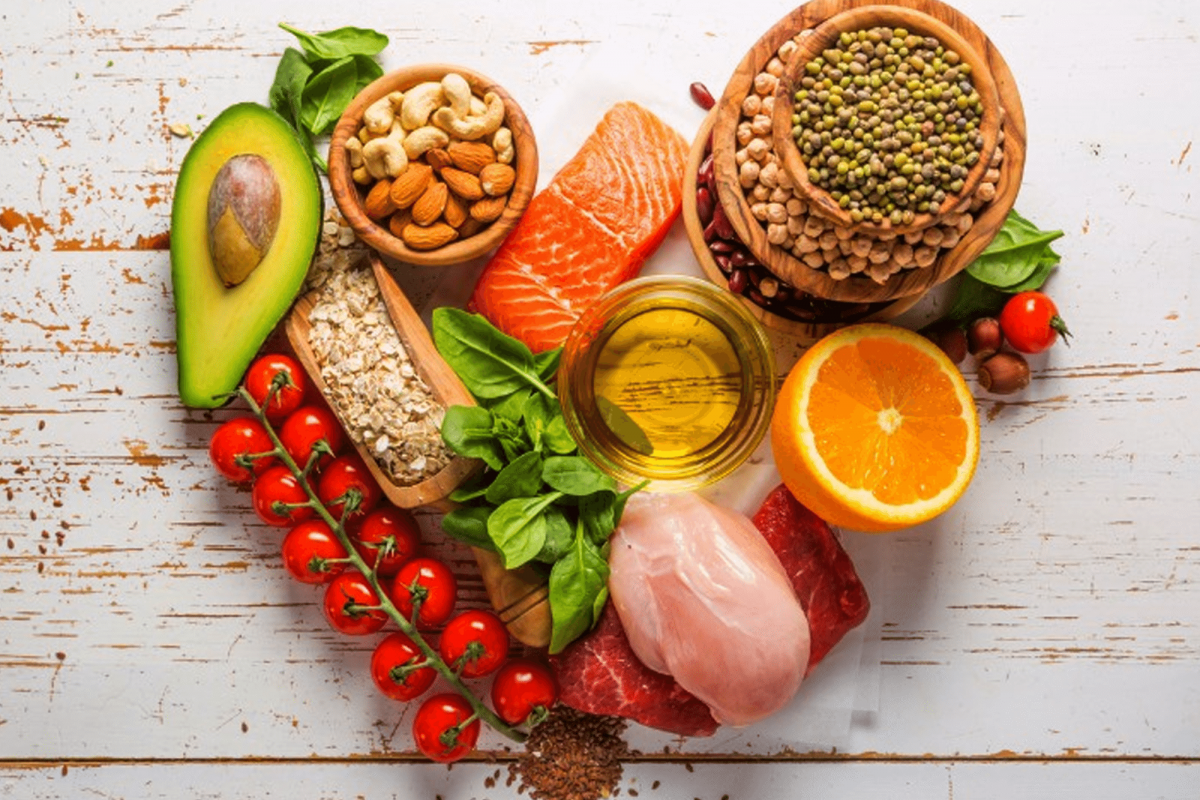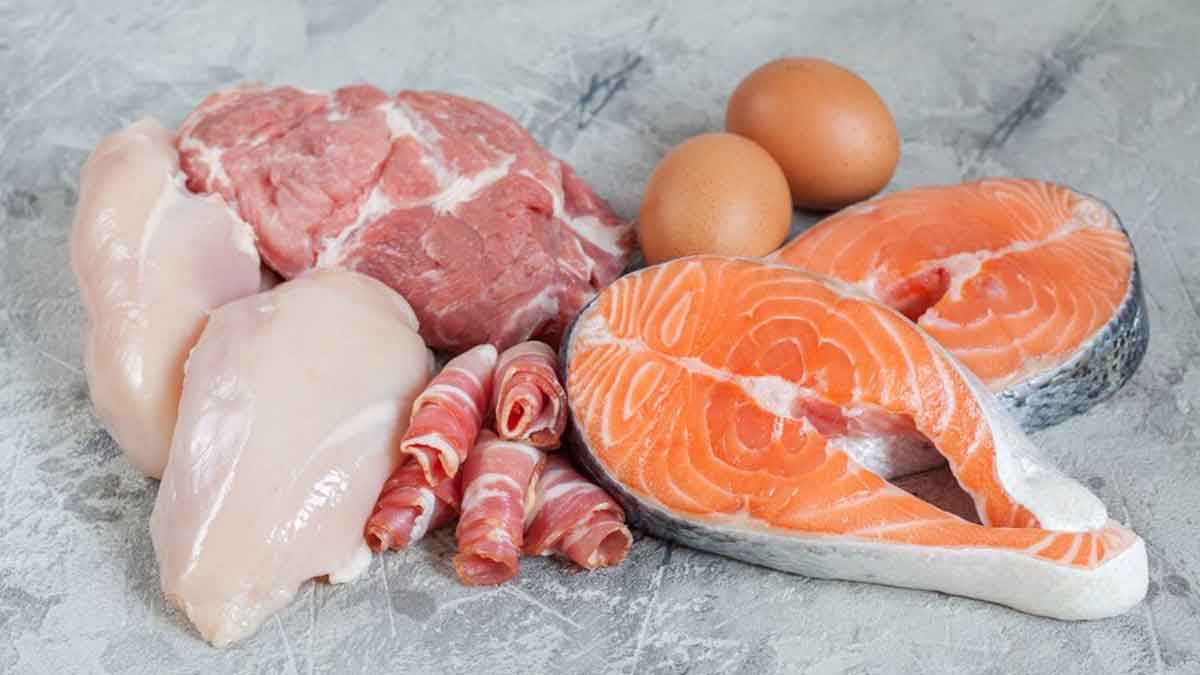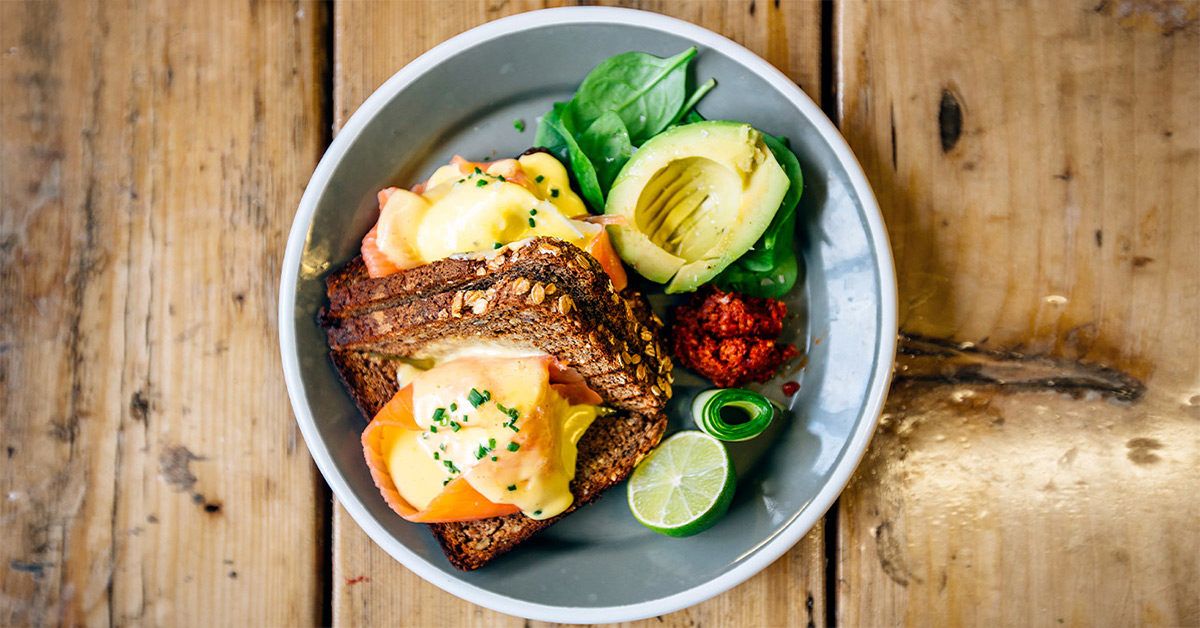Can’t Keep Blood Sugar Stable? Here’s a Type 1 Diabetes Diet Plan That Helps
Struggling with sudden spikes or drops in blood sugar? This type 1 diabetes diet plan offers practical food choices and meal tips to help you stay balanced every day.
Blood sugar swinging up and down like a seesaw? You’re not alone—and it’s not your fault. Type 1 diabetes doesn’t just need insulin, it needs a diet that works with it, not against it.
Maybe you’re eating healthy but still facing random spikes. Or you’re stuck counting carbs without real results. That’s because a good type 1 diabetes diet plan isn’t just about what you eat—it’s about how and when you eat it.
This article breaks down a simple, practical diet plan made specifically for type 1 diabetes. Whether you’re newly diagnosed or still trying to figure things out, it’ll help you take back control of your blood sugar—without overthinking every bite.
What Makes a Diabetes Diet Crucial for Type 1 Diabetes Patients

Eating for type 1 diabetes isn’t just about food—it’s about timing, balance, and avoiding big swings in blood sugar. A good diet helps you match your insulin with food and supports long‑term health.
Below, we break down two key ideas you need to grasp first: how food impacts your blood sugar, and why neglecting that can hurt your health later.
How Food Directly Affects Blood Sugar Levels in Type 1 Diabetes
When you eat carbohydrates, your body turns them into sugar (glucose). That glucose enters your blood, raising your blood sugar levels soon after a meal.
-
Simple carbs (sugary foods, white bread, sugary drinks) tend to spike blood glucose levels quickly.
-
Complex carbs, fiber, lean proteins, and healthy fats slow the rise, giving you a more stable curve.
Because people with type 1 diabetes depend on injected insulin, matching your insulin dose to what you eat is critical. Otherwise, you risk having high blood sugar levels (hyperglycemia) or dropping too low (hypoglycemia).
Also, your body’s response can change daily—so it’s important to watch how different foods affect blood sugar levels and adjust.
Curious how Balance Bite helps diabetic patients? Book your free consultation
Why Ignoring Blood Sugar Levels Can Harm Long-Term Diabetes Management

Letting your blood sugar swing wildly may feel okay short-term, but over months and years it leads to serious issues.
Your organs—kidneys, eyes, nerves—can suffer damage from consistently high glucose.
-
Long-term high blood sugar contributes to complications like nerve damage (neuropathy), kidney stress, and vision problems.
-
It also makes managing diabetes management harder over time, because your body may respond less well to insulin.
Additionally, poor control can make daily life tougher: fatigue, mood swings, and constant worry about levels.
A stable blood sugar approach supports better overall health and gives you more headspace to live, not just manage diabetes.
7 Day Sample Chart for Diabetic Patients to Maintain Healthy Blood Sugar
Planning meals ahead can help keep your blood sugar levels steady throughout the week. This 7-day sample diet chart for diabetic patients gives you veg, non-veg, and vegan options from breakfast to dinner—so you can follow a balanced diet no matter your food preference.
Day 1
-
Veg:
Breakfast: Oats with skim milk and chopped nuts
Lunch: Mixed vegetable curry with brown rice and salad
Dinner: Moong dal khichdi with steamed broccoli -
Non-Veg:
Breakfast: Boiled egg with multigrain toast
Lunch: Grilled chicken breast with stir-fried veggies and brown rice
Dinner: Chicken soup with chapati and sautéed spinach -
Vegan:
Breakfast: Chia seed pudding with almond milk and berries
Lunch: Lentil curry with quinoa and cucumber salad
Dinner: Stir-fried tofu with veggies and millet
Day 2
-
Veg:
Breakfast: Vegetable upma with a cup of green tea
Lunch: Palak paneer with 2 chapatis and salad
Dinner: Bottle gourd curry with brown rice and curd -
Non-Veg:
Breakfast: Scrambled eggs with sautéed tomatoes
Lunch: Fish curry with brown rice and sautéed beans
Dinner: Grilled chicken salad with olive oil dressing -
Vegan:
Breakfast: Ragi porridge with almond milk
Lunch: Chickpea stir-fry with brown rice and carrot salad
Dinner: Vegan lentil soup with whole wheat toast
Day 3
-
Veg:
Breakfast: Multigrain toast with peanut butter and a boiled egg
Lunch: Rajma (kidney beans) curry with quinoa
Dinner: Cabbage stir-fry with millet and curd -
Non-Veg:
Breakfast: Omelet with onions and capsicum
Lunch: Chicken tikka with roti and salad
Dinner: Fish stew with vegetables and brown rice -
Vegan:
Breakfast: Smoothie with spinach, banana, and unsweetened almond milk
Lunch: Tofu and bell pepper curry with quinoa
Dinner: Moong dal with bottle gourd and millet
Day 4
-
Veg:
Breakfast: Besan chilla with mint chutney
Lunch: Bhindi masala with 2 rotis and salad
Dinner: Vegetable soup with toast and curd -
Non-Veg:
Breakfast: Boiled egg sandwich on whole grain bread
Lunch: Fish grilled with lemon and garlic, served with quinoa
Dinner: Chicken and vegetable stew with roti -
Vegan:
Breakfast: Poha with peanuts and lemon
Lunch: Rajma with brown rice and cucumber salad
Dinner: Stir-fried tofu with capsicum and foxtail millet
Day 5
-
Veg:
Breakfast: Vegetable daliya with curd
Lunch: Chana masala with roti and beetroot salad
Dinner: Tinda curry with brown rice -
Non-Veg:
Breakfast: Egg bhurji with multigrain toast
Lunch: Grilled chicken wrap with salad
Dinner: Fish curry with quinoa and green beans -
Vegan:
Breakfast: Sprouts salad with lemon juice
Lunch: Mixed vegetable sambar with brown rice
Dinner: Pumpkin soup with toasted whole wheat bread
Day 6
-
Veg:
Breakfast: Idli with sambar and coconut chutney
Lunch: Lauki chana dal with 2 rotis and salad
Dinner: Vegetable pulao with curd -
Non-Veg:
Breakfast: Fried egg on roti with tomato slices
Lunch: Chicken curry with brown rice
Dinner: Grilled fish with sautéed spinach -
Vegan:
Breakfast: Ragi dosa with tomato chutney
Lunch: Tofu bhurji with chapati and carrot salad
Dinner: Millet porridge with steamed veggies
Day 7
-
Veg:
Breakfast: Paratha with curd and methi
Lunch: Baingan bharta with roti
Dinner: Corn soup with toast and salad -
Non-Veg:
Breakfast: Egg salad with multigrain toast
Lunch: Grilled chicken with sweet potato mash
Dinner: Prawn curry with brown rice -
Vegan:
Breakfast: Smoothie with oats, almond milk, and chia
Lunch: Lentil stew with brown rice
Dinner: Sauteed mushrooms with whole wheat roti
Ready to stabilize your blood sugar? Talk to a nutritionist at Balance Bite today
5 Common Diet Mistakes Diabetes Patients Should Avoid

Even when you try hard, certain diet mistakes sneak in and throw off your blood sugar control. Avoiding these common errors is key for better diabetes management and steady health.
1. Skipping Meals and Losing a Balanced Diet
Skipping meals may feel okay but it’s risky for type 1 diabetes.
When you skip:
-
Your blood sugar may drop too low, prompting overeating later
-
You lose consistency in your diabetic diet plan and your insulin schedule
Eating regularly also helps with weight management and keeps your healthy lifestyle on track. A simple meal plan based on your indian diabetic diet chart can help you stay consistent and avoid gaps.
2. Eating Too Many Refined Carbs at Once
Refined carbs (white bread, sugary drinks, white rice) spike glucose quickly.
-
These foods lack fiber and cause fast spike blood sugar levels
-
They worsen control when your insulin dosing is off
-
Choosing complex carbohydrates, whole refined grains, and non starchy vegetables helps smooth out the curve
It’s also smart to avoid common fried foods that add empty calories and hurt blood sugar management.
3. Ignoring Portion Sizes
Even healthy foods can push your sugar too high if you eat too much.
-
Without portion control, even brown rice or beans can escalate glucose
-
A plate too full undermines the idea of a balanced diet
-
Measuring or eyeballing portions helps maintain better blood sugar control
Your indian diabetic diet chart should include portion guides to keep meals in check without removing variety.
Take control of your diet—explore Balance Bite’s custom meal plans now
4. Forgetting to Match Meals With Insulin Sensitivity
Your body’s response to insulin changes—so must your meals.
-
If you don’t align meal timing with your insulin, sugar goes too high or dips
-
On days you’re more active or less, your insulin sensitivity shifts
-
Always consider your insulin dose when you plan your diabetic diet
Having enough insulin isn’t just about taking the right amount—it’s also about timing it well with your food and activity levels.
5. Not Tracking Blood Sugar After New Foods
Trying a dish without checking your levels is like driving blind.
-
Every new food may affect you differently
-
Checking after meals shows you how foods affect your body
-
Use these insights to refine your diabetic diet chart
This habit helps with managing blood sugar levels long term and ensures you’re not guessing your way through your meals.
How to Use a Diabetic Diet Chart for Better Blood Sugar Control

Using a diabetic diet chart isn’t just about listing foods—it’s a tool to help you regulate blood sugar levels daily. For any diabetic patient, this chart supports healthful eating by offering clear guidance on what, when, and how much to eat for better blood sugar control.
When you follow a chart that matches your insulin needs, activity level, and food preferences, it becomes easier to maintain stable blood sugar levels. It also plays a key role in managing blood sugar levels and reducing the chances of sudden highs or lows.
Start by choosing or creating a diabetic diet chart that supports your lifestyle. A good chart includes:
-
Portion control for complex carbs, proteins, and healthy fats
-
Timed meals: breakfast, lunch, dinner, and snacks
-
Space to track insulin doses or physical activity changes
As you follow the chart:
-
Check your blood sugar level before and after meals to learn how foods affect your body
-
Replace sugary beverages or carbonated drinks with green tea, water, or unsweetened options
-
Prioritize nutritious meals with whole grains, lean protein sources, green leafy vegetables, and non-starchy vegetables
This routine encourages a healthy diet and supports managing diabetes effectively. Over time, you’ll begin to notice patterns—some meals keep you steady, while others spike your levels. That insight helps with regulating blood sugar levels more confidently.
Also, don’t treat the chart as strict rules. It’s a flexible guide. Your needs may change, especially if you adjust your Indian diabetic diet or activity level. Keep tracking, learning, and adjusting for long-term success.
Practical Tips to Help Control Blood Sugar Levels

Controlling your blood sugar isn’t just about medicine—it’s about the habits you build every day. Below are seven simple, practical tips that help you manage blood sugar levels better and support your health.
1. Eat Balanced Meals with Complex Carbs

Your meals should include carbs, protein, and fats in the right mix—that’s what a well balanced diet means.
-
Favor complex carbohydrates like whole grains, oats, and brown rice instead of white rice or white bread
-
Pair carbs with vegetables and proteins to slow digestion
-
This helps you avoid sharp blood sugar spikes after eating
Using a diabetic food chart that shows portions of each group can make this easier.
2. Include Lean Proteins in Every Meal

Protein helps slow down the absorption of glucose and keeps you full.
-
Choose lean sources like chicken breast, fish, lentils, or beans
-
Avoid too much fatty meat or unhealthy fats—they don’t help control sugar
-
Proteins help maintain healthy weight, which aids in diabetes management
Adding a good protein source to your meals supports better blood pressure and overall health, too.
3. Choose Low Glycemic Index Foods

Foods with a low glycemic index raise your blood sugar more slowly and gently.
-
Opt for beans, green leafy vegetables, barley, or oats
-
Stay away from sugary foods, fruit juices, or other high GI options
-
These foods help with blood sugar regulation in the long term
Using an indian diet chart that includes local low GI options makes these foods easier to pick.
4. Avoid Sugary Drinks and Snacks

Liquid sugar can hit your system fast and push glucose high before you notice.
-
Skip sodas, sweetened drinks, and sugary beverages
-
Even juice can cause spikes—go for whole fruits or water instead
-
Watch out for hidden sugar in snacks or packaged foods
Replacing these with water, green tea, or unsweetened beverages helps with better blood sugar control.
5. Watch Portion Sizes Closely

Even healthy food can become harmful if you eat too much of it.
-
Use smaller plates or measuring tools to keep portions in check
-
Divide your plate—half vegetables, one quarter protein, one quarter complex carbs
-
Be mindful with snack portions
A personalized diet chart helps you know exactly how much to eat each meal.
6. Stay Active with Light Daily Exercise

Movement helps your body use insulin better and lower glucose.
-
Walk, stretch, or do simple exercises for 20–30 minutes daily
-
Even light activity after meals helps blunt spikes
-
Stay consistent rather than doing intense workouts once a week
This tip supports blood sugar regulation, insulin resistance management, and your overall healthy lifestyle.
7. Stick to a Consistent Meal Timing Schedule
Eating at random times can confuse your blood sugar patterns and make it harder to manage levels.
-
Try to eat meals and snacks around the same time each day
-
Spacing meals evenly helps avoid dips and spikes in blood sugar
-
Don’t delay meals if you're taking insulin—your body needs both working together
A steady routine supports insulin resistance management and helps your body know what to expect—making blood sugar management simpler day by day.
Conclusion
Now that you’ve read this 7far, it’s clear you’re someone who wants to take real steps—not just quick fixes—to feel better every day. That matters. Most people scroll past the hard part. You didn’t.
So here’s your next move: start small, stay consistent, and listen to what your body is telling you. Because managing type 1 diabetes isn’t about doing everything perfectly—it’s about doing what works for you with patience and intent.
You’re already on the path. Keep going—your future self will thank you for not giving up at “almost.”
Want better blood sugar management? Start with a diet plan from Balance Bite




















Leave a comment
Translation missing: en.blogs.comments.discription